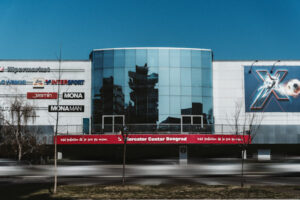By Patrick Burkert
Let’s start with the nature of the pop-up store’s original concept: Here today, gone tomorrow. Pop-up stores are temporary concepts utilized by emerging or established brands and retailers that use live marketing, special sales, or creative events to launch new products, create brand awareness, or enter new markets and target groups in order to sell.
Pop-ups can provide a time-limited increase in awareness or frequency for a commercial property; however, they are not empty space band-aid solutions and will not solve vacancy problems in the far corner on the unfrequented third floor of a mall, so give them the space that they deserve.
When placed in the most popular and frequented areas as stands, containers, or in classical stores, pop-ups can create a huge buzz, but first, it’s all about the matchmaking. Matchmaking between the perfect-targeted location and brands goals and target groups is our most important job, and it’s an essential one. The best fitting locations must be matched against all relevant target group information in order to create a new success story for yourself and the brand.
As we all know, online and offline retail are merging together, and our commercial spaces are becoming stages or billboards for marketing campaigns and brand activities that can be booked flexibly and on-demand, much in the same manner as classic online media channels. The physical component is as important as it ever was, contributing its power to the customers’ need to experience products and brands firsthand, but there is sometimes an expensive access barrier to overcome: The retail real estate industry.
As long-term tenants are vanishing and a new generation of tenants is growing, we see short-term and flexible leases as more stable and sustainable than long-term commitments. The winners in all of this are not necessarily only big, established, well-known brands with large budgets, which are at the forefront of this new marketing channel; some of them are just as new as Nike was half a century ago or come from diverse industries, such as e-commerce, which had never before been seen in brick-and-mortar retail. As some of them are currently or will be successful digital sellers in the influencer cosmos, with thousands of followers, now is the time to take advantage of them.
These brands and concepts might not have the financial capacity to follow classical leasing rules at first, so they have to be measured in media value more than in lease-to-sales ratios. By opening the gates for new brands to try out physical sales or marketing, you act as an accelerator for their success, and the payback will be substantial, thereby contributing to your own long-term value, if you allow them to grow with you and support them in every aspect of their journey.
Successful pop-up tenants want to repeat their success as they want to scale their sales and actions; therefore, pop-ups are used and seen around the world in every metropolitan city, and not just on the classical main street. They can sometimes be found in more unexpected and surprising locations and environments or even in spaces that hadn’t previously existed. Pop-ups have high retention rates, and the right pop-up concept in the right spot can have flourishing effects on a property’s overall image and traffic, even if their names are not Amazon, Adidas, or Comme des Garçons – thus, we have to understand their needs and provide the right service.
If you understand your role to be more of an incubator, you can support all of those processes by providing great retail spaces and pop-up locations, not only for your own profit margin, or you can go even one step further by providing dedicated pop-up areas and spaces for different brands and concepts, then start curating and pushing them as if they were the Rolling Stones on your stage. There are numerous strong examples of successfully implemented pop-up areas and events in shopping malls, such as the wooden Boxes in Bikini Berlin or the retail container park in Maremagnum in Barcelona.
Another powerful aspect of all of this to consider is that extensive international “brand traveling” can be seen. Pop-ups allow brands from Amsterdam to appear in Berlin for two weeks, then continue on to a mall in Barcelona the following month before entering Vienna, which serves as the gateway to east European markets. They are like modern nomads, and a number of brands, including Happy Socks, started off in this manner before becoming global players in the industry.
The long-term core tenants in your mall will benefit from the newly attracted audience that successful brands bring via their pop-up stores, so open your doors to new brands and ideas, give them the space that they deserve, and help them to accelerate by means of new monetization models that are outside of the box and adjusted to their time and space needs. You’ll be surprised by what they can do for you.
Sign up for our ACROSS Newsletter. Subscribe to ACROSS Magazine.





